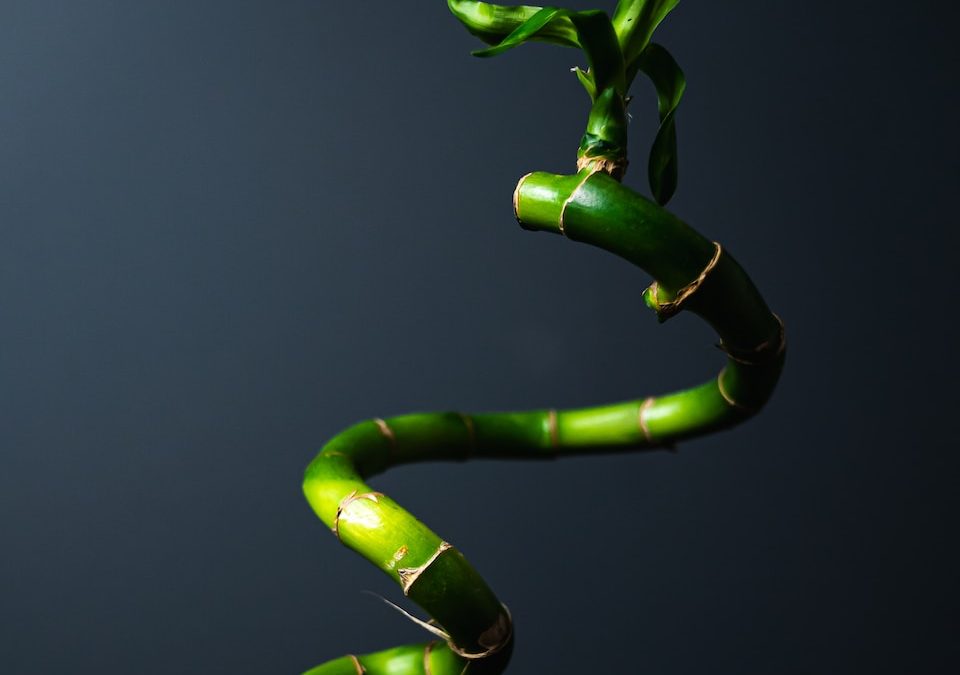Lucky bamboo (Dracaena sanderiana) is a popular houseplant known for its resilience and attractive appearance. Often grown in water, lucky bamboo can also thrive in soil when given proper care. In this article, we’ll explore the different types of soil suitable for lucky bamboo plants and provide tips for planting and maintaining them.
Contents
- 1 Optimal Soil Conditions for Lucky Bamboo
- 2 Preparing Soil for Lucky Bamboo
- 3 Planting Lucky Bamboo in Soil
- 4 Caring for Lucky Bamboo in Soil
- 5 Repotting Lucky Bamboo
- 6 Lucky Bamboo Plant Propagation
- 7 Common Lucky Bamboo Problems and Solutions
- 8 The Symbolism of Lucky Bamboo
- 9 Lucky Bamboo: An Ideal Houseplant for Beginners
Optimal Soil Conditions for Lucky Bamboo
Though lucky bamboo can tolerate a range of soil conditions, it prefers well-draining, slightly acidic to neutral soil. Here, we’ll discuss various soil types and their characteristics.
1. Loamy Soil
Loamy soil is an ideal choice for lucky bamboo due to its excellent drainage and nutrient retention properties. It is a combination of sand, silt, and clay, providing a balanced texture that allows water and air to penetrate easily while retaining essential nutrients.
2. Sandy Loam Soil
Sandy loam soil is another suitable option for lucky bamboo plants. It contains a higher proportion of sand, which improves drainage and prevents root rot. This soil type is also lighter, allowing the roots to grow and spread with ease.
3. Peat-Based Potting Mix
A peat-based potting mix is a good alternative to traditional soil, as it is lightweight, well-draining, and retains moisture. Adding perlite, vermiculite, or sand to the mix can enhance drainage and aeration, ensuring a healthy environment for your lucky bamboo plant.
Preparing Soil for Lucky Bamboo
Before planting your lucky bamboo in soil, it’s essential to prepare the soil correctly. Follow these steps for optimal results:
- Choose a suitable container: Select a pot with drainage holes to prevent waterlogging. Ensure the pot is large enough to accommodate the plant’s growth.
- Prepare the soil mix: Combine your chosen soil with amendments like perlite, vermiculite, or sand to improve drainage and aeration.
- Test the pH level: Lucky bamboo thrives in slightly acidic to neutral soil (pH 6.0-7.0). Use a soil pH testing kit to determine the pH level and make adjustments if necessary by adding lime (to raise pH) or sulfur (to lower pH).
Planting Lucky Bamboo in Soil
Once you’ve prepared the soil, follow these steps to plant your lucky bamboo:
- Remove the plant from water: Gently remove the plant from its water container, taking care not to damage the roots.
- Trim any damaged roots: Examine the roots and trim away any that appear damaged, discolored, or soft.
- Fill the pot with soil: Add a layer of prepared soil to the bottom of the pot.
- Place the plant in the pot: Position the lucky bamboo plant in the center of the pot, spreading the roots evenly.
- Cover the roots with soil: Fill the pot with soil, ensuring the roots are covered but the top of the stem remains exposed. Gently press the soil down to eliminate air pockets.
- Water the plant: Thoroughly water the newly potted lucky bamboo, allowing the excess water to drain through the drainage holes.
- Add a layer of mulch: Apply a thin layer of organic mulch, such as bark or coconut coir, to help retain moisture and regulate soil temperature.
Caring for Lucky Bamboo in Soil
To keep your lucky bamboo healthy and thriving, follow these care tips:
- Watering: Water your lucky bamboo when the top inch of soil feels dry. Be careful not to overwater, as this can lead to root rot.
- Light: Place your lucky bamboo in a well-lit area with indirect sunlight. Too much direct sunlight can scorch the leaves, while insufficient light may cause the plant to become weak and spindly.
- Temperature: Lucky bamboo prefers temperatures between 65-90°F (18-32°C). Keep your plant away from drafts, air vents, or heaters.
- Fertilizing: Fertilize your lucky bamboo plant every 4-6 weeks during the growing season with a balanced, water-soluble fertilizer diluted to half strength.
- Pruning: Prune your lucky bamboo to maintain its size and shape. Remove yellowing or dead leaves and trim the top growth to encourage bushier growth.
- Pest control: Inspect your plant regularly for pests such as spider mites or mealybugs. Treat any infestations with insecticidal soap or neem oil.
Repotting Lucky Bamboo
As your lucky bamboo plant grows, it may become root-bound or outgrow its current pot. Repotting allows the plant to continue growing healthily. Follow these steps to repot your lucky bamboo:
- Choose a larger pot: Select a pot that is 1-2 inches larger in diameter than the current pot. Ensure it has drainage holes to prevent waterlogging.
- Prepare the new soil mix: Create a fresh soil mix using your preferred soil type and any necessary amendments.
- Gently remove the plant: Carefully remove the lucky bamboo from its current pot, taking care not to damage the roots.
- Inspect and trim roots: Check the root system for any damaged or rotting roots and trim them as needed.
- Place the plant in the new pot: Position the lucky bamboo in the center of the larger pot, spreading the roots out evenly.
- Fill the pot with soil: Add the fresh soil mix, covering the roots but leaving the stem exposed. Firmly press the soil down to eliminate air pockets.
- Water thoroughly: Water the newly repotted plant, allowing the excess water to drain out.
- Resume regular care: Continue to care for your lucky bamboo as usual, monitoring for any signs of stress or adjustment issues.
Lucky Bamboo Plant Propagation
Lucky bamboo plants can be easily propagated through stem cuttings. Here’s how to propagate your lucky bamboo:
- Select a healthy stem: Choose a healthy, vigorous stem with at least two leaf nodes.
- Make a clean cut: Using a sharp, sterilized pair of scissors or pruning shears, cut the stem just below a node.
- Prepare a water container: Fill a clean container with filtered or bottled water, ensuring the water is free of chemicals like chlorine.
- Place the cutting in water: Submerge the cut end of the stem in the water, making sure the node is fully covered.
- Provide proper conditions: Place the container in a well-lit area with indirect sunlight and maintain a consistent temperature of 65-90°F (18-32°C).
- Monitor root development: In 3-4 weeks, roots should begin to develop from the submerged node. Change the water every week to prevent bacterial growth.
- Transfer to soil: Once the roots are 2-3 inches long, transfer the cutting to a prepared pot with suitable soil, following the planting steps outlined earlier.
Common Lucky Bamboo Problems and Solutions
Despite its resilience, lucky bamboo can still encounter some common issues. Here’s how to identify and resolve these problems:
Yellowing Leaves
Cause: Overwatering, poor water quality, or excessive sunlight.
Solution: Ensure proper watering by allowing the top inch of soil to dry before watering. Use filtered or bottled water and move the plant to a location with indirect sunlight.
Soft, Mushy Stems
Cause: Root rot due to overwatering or poor drainage.
Solution: Remove the affected plant from its pot, trim away any damaged roots, and repot in fresh, well-draining soil. Adjust watering practices to prevent future issues.
Leggy or Spindly Growth
Cause: Insufficient light.
Solution: Move the plant to a brighter location with indirect sunlight to encourage healthy, compact growth.
Pests
Cause: Spider mites, mealybugs, or scale insects.
Solution: Treat infestations with insecticidal soap or neem oil, and maintain proper care practices to prevent future outbreaks.
By understanding and addressing these common issues, you can ensure your lucky bamboo plant remains healthy and thriving.
The Symbolism of Lucky Bamboo
Lucky bamboo is often associated with good fortune, prosperity, and positive energy. In Chinese culture, the plant is believed to bring good luck and is a popular gift for housewarmings, birthdays, and other special occasions. The number of stalks in a lucky bamboo arrangement also holds significance:
- Two stalks symbolize love and double luck.
- Three stalks represent happiness, wealth, and longevity.
- Five stalks symbolize the five aspects of life: emotional, mental, physical, spiritual, and intuitive.
- Six stalks represent good fortune and prosperity.
- Eight stalks symbolize growth and abundance.
- Nine stalks represent lasting luck and happiness.
- Ten stalks signify perfection and completeness.
By incorporating lucky bamboo into your home or office, you can enjoy not only its beauty but also its positive energy and symbolism.
Lucky Bamboo: An Ideal Houseplant for Beginners
Lucky bamboo plants are perfect for those new to gardening or with busy lifestyles, as they require minimal care and can adapt to various conditions. By choosing the right soil, providing proper care, and addressing any issues that arise, you can enjoy the many benefits of lucky bamboo plants in your living space.
In summary, successfully growing a lucky bamboo plant in soil involves selecting the right soil type, providing proper care, and addressing any potential issues. With its resilience, attractive appearance, and symbolism of good fortune, lucky bamboo makes an excellent addition to any home or office.


